Abstract
Gibberellins (GAs) are a group of plant growth hormones that were first isolated from the fungus Gibberella fujikuroi. The biosynthesis of GA in liquid cultures of the fungus has been examined using high-performance liquid chromatography and combined gas chromatography-mass spectrometry. GA3 was the predominant GA in well-aerated cultures. GA4 and GA7, intermediates in GA3 biosynthesis, accumulated in cultures with low levels of dissolved oxygen, but were not detectable in more highly aerated cultures. Light stimulated the production of GA3 in G. fujikuroi cultures grown from young stock cultures. Cell-free enzyme studies revealed a significant stimulation in the levels of kaurenoic acid oxidation in cultures grown in the light in comparison with those grown in the dark. However, measurements of the relative rates of [14C]mevalonic acid incorporation into kaurene showed no effect of light on this early part of the pathway. Preliminary experiments indicated that blue light is most effective in enhancing kaurenoic acid oxidation.
Full text
PDF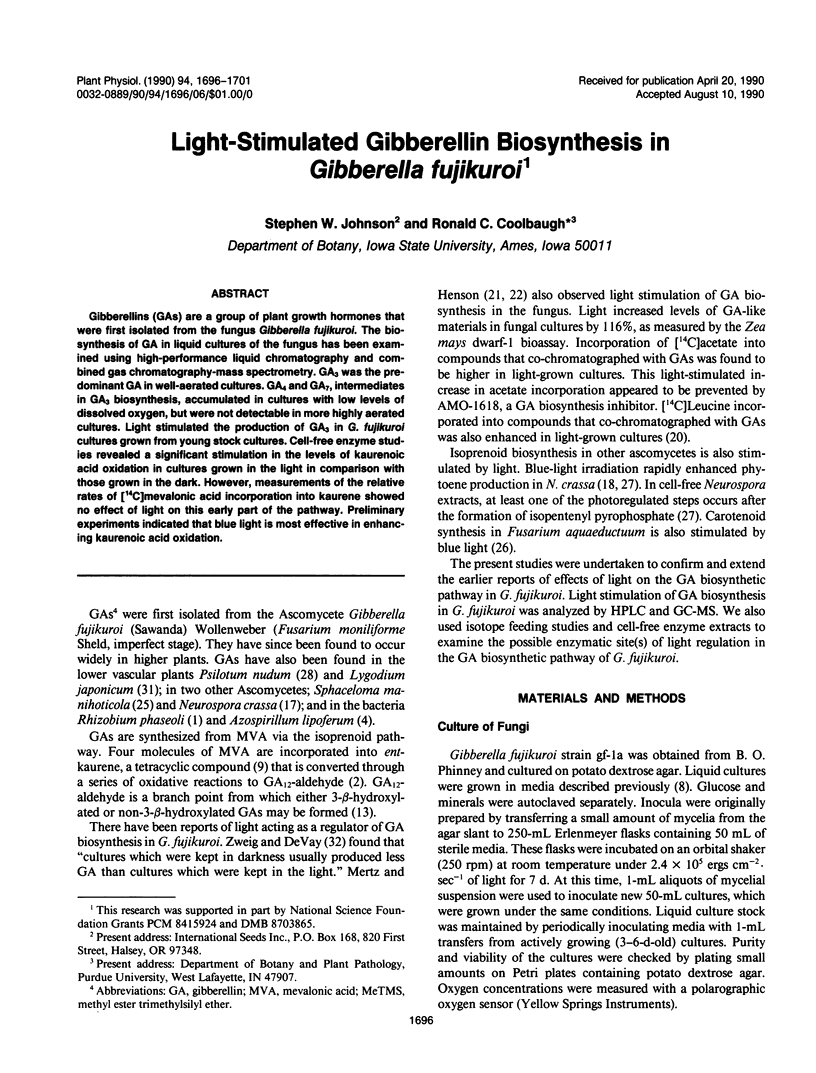
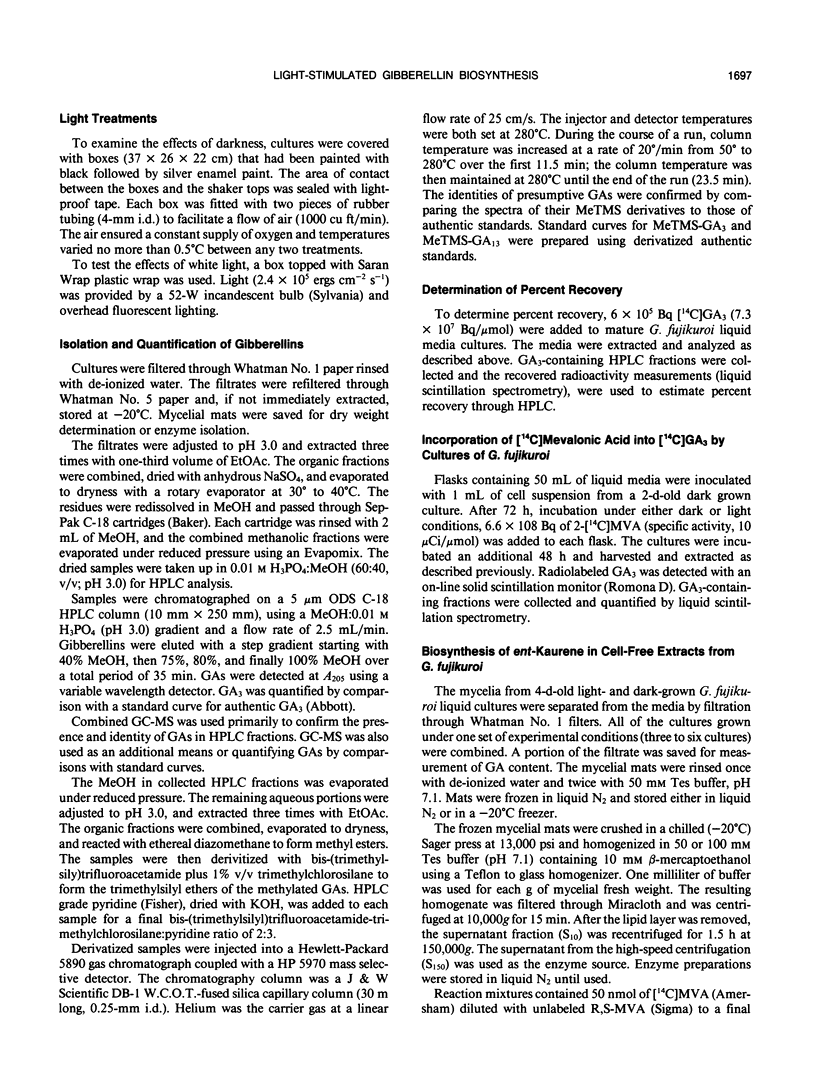
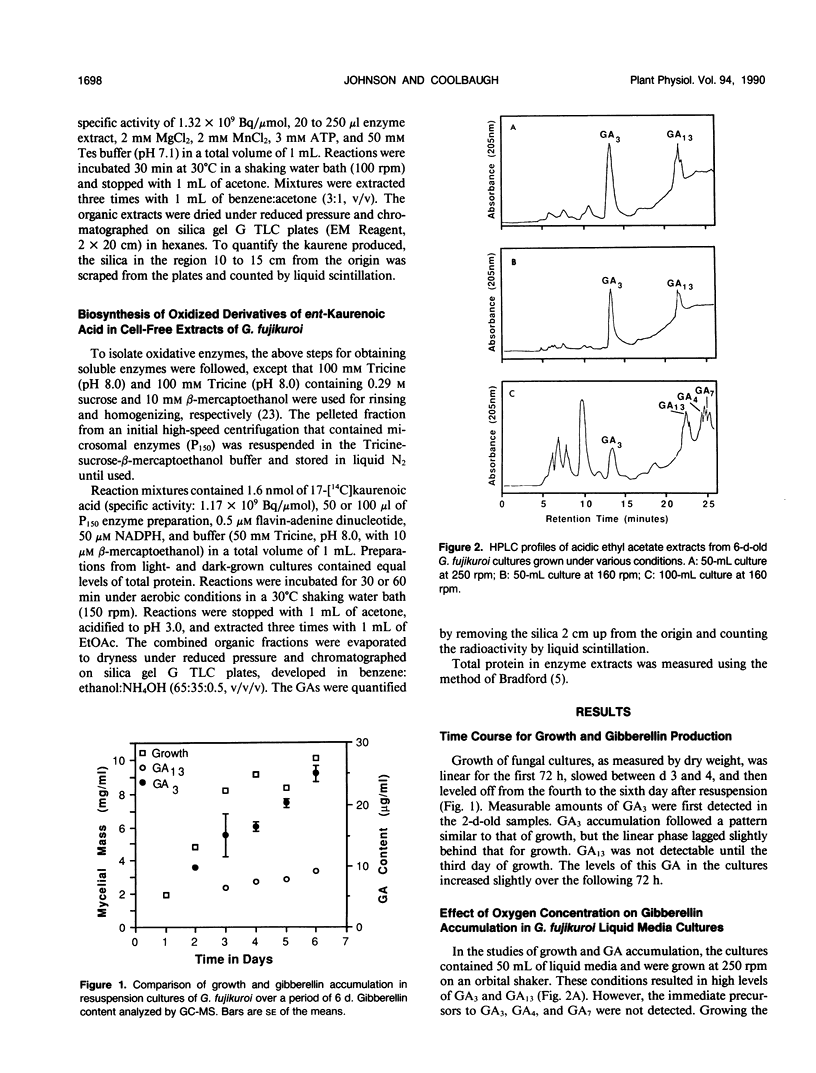
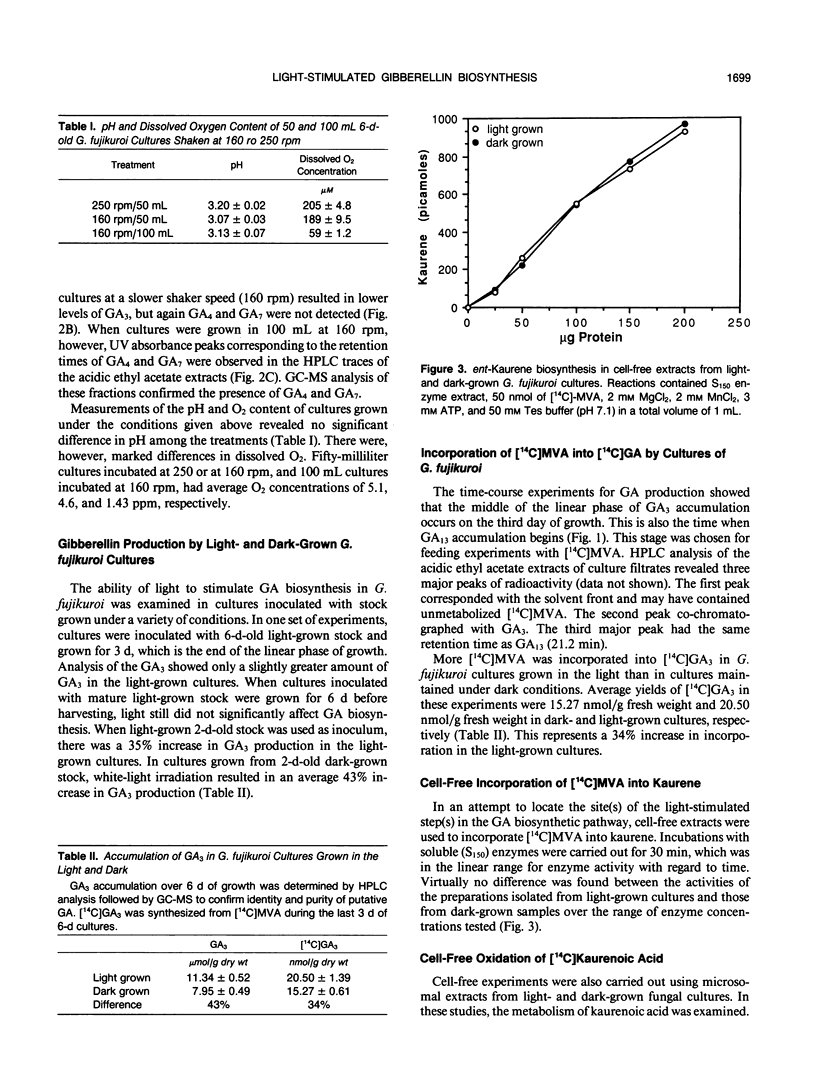
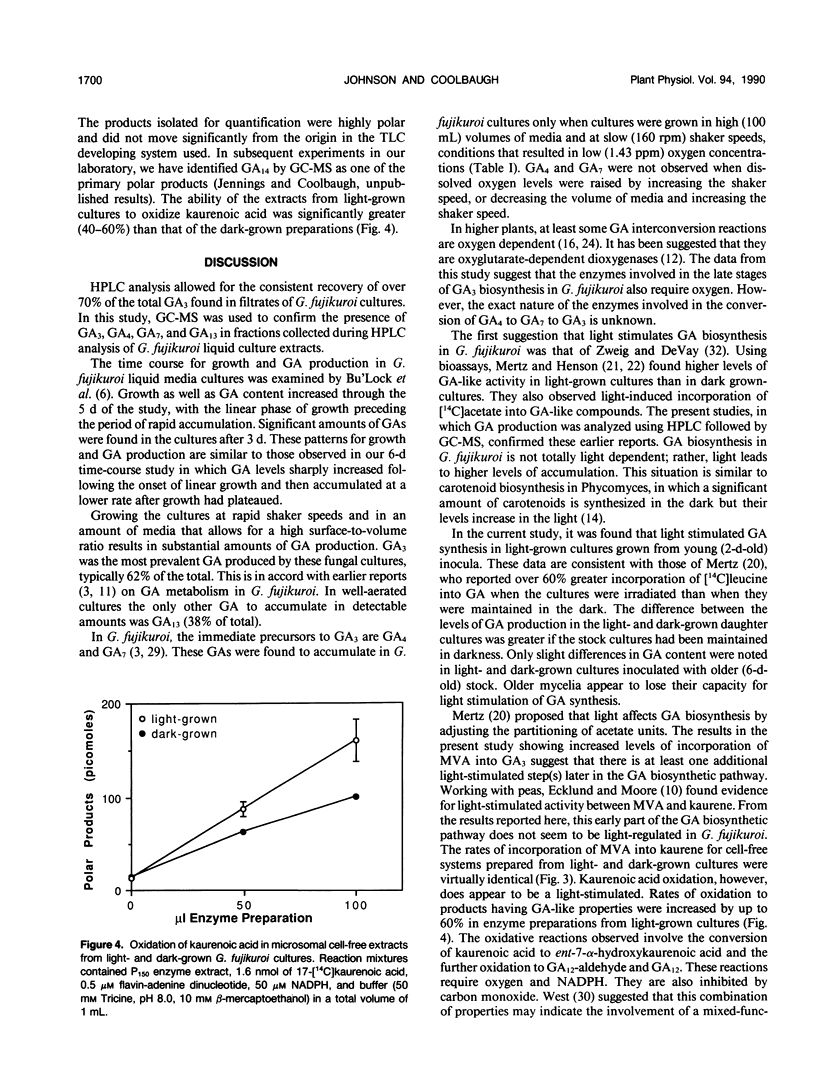
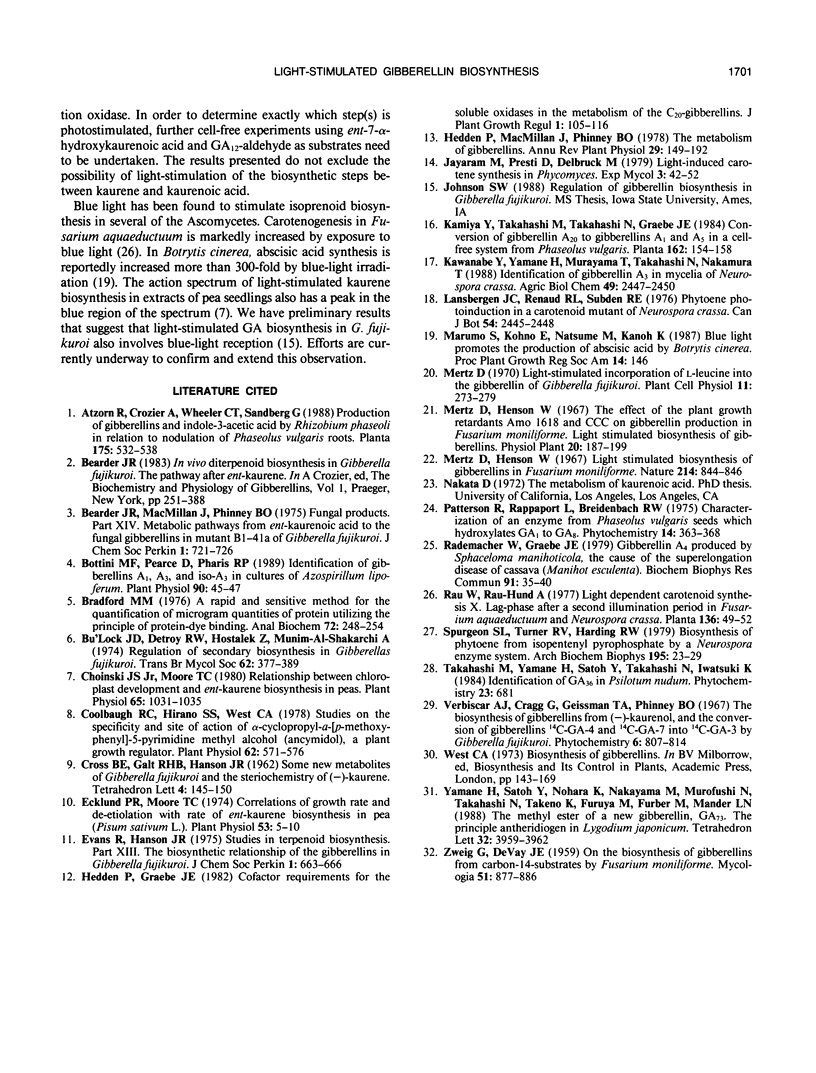
Selected References
These references are in PubMed. This may not be the complete list of references from this article.
- Bottini R., Fulchieri M., Pearce D., Pharis R. P. Identification of Gibberellins A(1), A(3), and Iso-A(3) in Cultures of Azospirillum lipoferum. Plant Physiol. 1989 May;90(1):45–47. doi: 10.1104/pp.90.1.45. [DOI] [PMC free article] [PubMed] [Google Scholar]
- Bradford M. M. A rapid and sensitive method for the quantitation of microgram quantities of protein utilizing the principle of protein-dye binding. Anal Biochem. 1976 May 7;72:248–254. doi: 10.1016/0003-2697(76)90527-3. [DOI] [PubMed] [Google Scholar]
- Choinski J. S., Moore T. C. Relationship between Chloroplast Development and ent-Kaurene Biosynthesis in Peas. Plant Physiol. 1980 Jun;65(6):1031–1035. doi: 10.1104/pp.65.6.1031. [DOI] [PMC free article] [PubMed] [Google Scholar]
- Coolbaugh R. C., Hirano S. S., West C. A. Studies on the Specificity and Site of Action of alpha-Cyclopropyl-alpha-[p-methoxyphenyl]-5-pyrimidine Methyl Alcohol (Ancymidol), a Plant Growth Regulator. Plant Physiol. 1978 Oct;62(4):571–576. doi: 10.1104/pp.62.4.571. [DOI] [PMC free article] [PubMed] [Google Scholar]
- Ecklund P. R., Moore T. C. Correlations of Growth Rate and De-etiolation with Rate of Ent-Kaurene Biosynthesis in Pea (Pisum sativum L.). Plant Physiol. 1974 Jan;53(1):5–10. doi: 10.1104/pp.53.1.5. [DOI] [PMC free article] [PubMed] [Google Scholar]
- Mertz D., Henson W. Light stimulated biosynthesis of gibberellins in Fusarium moniliforme. Nature. 1967 May 20;214(5090):844–846. doi: 10.1038/214844a0. [DOI] [PubMed] [Google Scholar]
- Rademacher W., Graebe J. E. Gibberellin A4 produced by Sphaceloma manihoticola, the cause of the superelongation disease of cassava (Manihot esculenta). Biochem Biophys Res Commun. 1979 Nov 14;91(1):35–40. doi: 10.1016/0006-291x(79)90579-5. [DOI] [PubMed] [Google Scholar]
- Spurgeon S. L., Turner R. V., Harding R. W. Biosynthesis of phytoene from isopentenyl pyrophosphate by a Neurospora enzyme system. Arch Biochem Biophys. 1979 Jun;195(1):23–29. doi: 10.1016/0003-9861(79)90323-0. [DOI] [PubMed] [Google Scholar]


